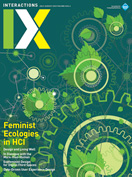Authors:
Gopinaath Kannabiran, Marie Louise Juul Søndergaard
On March 25, 1974, Gaura Devi, elected leader of the Mahila Mangal Dal (women's welfare association) in Reni village, Uttarakhand, India, along with 27 other women, led the Chipko movement to protect the local community forest from government-sanctioned lumbermen. Devi explains: "It was not a question of planned organisation of the women for the movement, rather it happened spontaneously. Our men were out of the village so we had to come forward and protect the trees." The Reni Squad succeeded in chasing away the loggers after four days of vigilant nonviolent protest. The Chipko movement became a watershed moment that gained national momentum and heralded several pro-environmental efforts across India. Jayanta Bandyopadhyay emphasizes that the Chipko movement was "a joint struggle based on gender collaboration…and not based on gender conflicts" [1]. Almost half a century later, the Chipko movement is often cited as a quintessential ecofeminist success story. We begin our preamble with this story as a reminder that feminist ecological interventions can be built based on collaboration between people of different genders. (See photo on page 22.)
During the initial Covid quarantine measures of working from home, we had online conversations about what was going on around us and within us. Two friends chatted regularly for more than a year about what we felt and struggled with as feminists. Many times, the mutual recognition of our struggles was in itself helpful because it made us feel heard and less lonely. Even though we talked about work sometimes, the conversations happened as two friends checking in on each other. After a while, we started wondering about how other feminists were navigating their work and personal lives amid the Covid chaos. This eventually led us to co-organize a virtual workshop titled "Feminist Voices About Ecological Issues in HCI" at ACM CHI 2022 [2]. The workshop was co-organized by HCI researchers from nine different countries doing intersectional feminist work across cultural contexts on various ecological issues. As workshop co-organizers, we made two important observations: First, there are multiple, ongoing feminism-informed engagements with various ecological issues in HCI across geopolitical contexts; second, all participants in our workshop expressed concerns about struggling to find a sense of academic community for their work. During our post-workshop reflections, we were struck by this conundrum: Multiple feminist engagements with ecological issues exist in HCI and yet there is a deeply felt sense of isolation and lack of communal belonging. As a response to this conundrum, here we present a curation of five articles under the broad umbrella of "feminist ecologies in HCI" engaging with facets of ecologically responsible design of technology.
In the words of environmental and human rights activist Arundhati Roy, "Another world is not only possible, she is on her way. On a quiet day, I can hear her breathing." The following articles amplify feminist voices dialoguing about what is possible across geopolitical contexts through case studies and theoretical reflections on ecological responsibility. We hope that this curation contributes toward discursive cohesion among different, and at times conflicting, feminist approaches to ecological responsibility, as applicable to and intertwined with HCI. As Ania Loomba and Ritty Lukose point out, "It is only in the vibrant interaction between such specificities and differences on the one hand, and shared desires and endeavors on the other, that feminist futures can be imagined" [3]. Phrases such as ecological responsibility often tend to gloss over existing geopolitical conflicts and ignore power imbalances while advocating benevolence toward human and nonhuman Others. Commenting on the current state of knowledge production at the ACM CHI conference, researchers have pointed out that "computer technology is often designed…based on the intuition, knowledge, and values of people who are Western, Educated, Industrialized, Rich, and Democratic" wherein "almost 3/4 of the knowledge we produce at CHI is based on 11.8% of the world's population" [4]. Therefore, any claim about designing technology for ecological responsibility requires us to critically examine how ecological responsibility is geopolitically negotiated, discursively operationalized, and ethically justified based on specific values and priorities. We insist that feminism-informed approaches can be of critical value for ecologically responsible technology design. Resisting the temptation to conceptualize ecological responsibility as a "universal good" that everyone must buy into, we introduce the notion of embedded ecologies here as formulated by Vijaya Rettakudi Nagarajan. Embedded ecologies refer to the "implicit and embodied ways of seeing and relating to the natural world" that are "contested, historicised, and culturally specific" [5]. We invite readers to critically interrogate ecological responsibility in this collection of articles through the notion of embedded ecologies.
 | Surviving members of the original Reni Squad at the Chipko 30th Anniversary 2004. |
To effectively address various social equity concerns, holding a discursive space for engaging with intersections of environmental and feminist issues is necessary, timely, and beneficial for a field like HCI [6]. Through this curation, we intend to boost the voices of researchers and practitioners engaging with notions of ecological responsibility in HCI through feminist approaches. Peter Zima reminds us that "a theoretical discourse is never identical with reality, that it constructs its objects and that these constructions are to be tested in an open dialogue with others, i.e., with heterogeneous theoretical positions" [7]. This special issue on feminist ecologies in HCI brings together heterogeneous formulations of ecological responsibility as: 1) affective prefigurations in encounters with others that prototype enactments of different and better that could still be to come; 2) menstrual care involving the porous, leaky, and regenerative skin of the vagina that demonstrates how caring for one body can extend to caring for the bodies of many; 3) a dialogue with soil that emphasizes the need to design climate-smart agricultural technologies attendant to the gendered geopolitics of climate change through an emplaced ethics of care; 4) digital third spaces created as fluid imaginaries between social binaries that offer the affordance of being as one is, while interacting with others as they are; and 5) design innovation for living well with others that requires respect for both established and newly developed value systems, nurturing community structures, sharing of intergenerational practices, and embracing the idea that less can be more. Through this curation, we do not aim to define or prescribe what a feminism-informed approach toward ecologically responsible design must look like. Instead, we showcase some ongoing work with the aim of opening up the discursive space and inviting heterogeneous perspectives to further develop feminist communal engagements about ecological responsibility with relevance to HCI.
Design discourses about ecological responsibility are not new. There have been notable changes, if not an evolution, in vocabulary, concepts, frameworks, materials, methods, methodologies, theories, and epistemic commitments informing design research and practice toward ecological responsibility. Victor Papanek's staunch advocacy for ecologically responsible design more than half a century ago; exponential growth of the sustainable HCI research in the past two decades; the recent embrace of "more than human" design narratives in HCI informed by posthumanism—these three instances provide snapshots of how ecological responsibility is developed and discursively substantiated through design research and practice. With respect to theory development, Zima explains, "We are dealing on the one hand with cognitive processes, on the other hand with strategic conflicts involving symbolic capital (reputation, prestige, etc.) and a redistribution of assets and roles in the field" [7]. Zima insists that theory must be understood "both as instrument of knowledge and as a strategy designed to ensure individual or collective predominance in the scientific field" [7]. Therefore, it is vital to examine how newer notions of ecological responsibility are theorized and discursively positioned in relation to existing paradigms. This special issue carves out a space of belonging for heterogeneous feminist notions of ecological responsibility. The five articles attempt to foreground and grapple with some of the strategic conflicts encountered by feminists in design knowledge production about ecological responsibility in HCI. Our aspiration here is not to provide answers to such complex issues but to invoke questions for further communal discussion and debate. We thank the contributors who were willing to: a) collaboratively explore what might be possible through our interactions with human and nonhuman Others, b) remain curiously imaginative about our yet-to-be-known shared futures, and c) engage with conflicts that might be uncomfortable at times and remain unresolved at present. We are deeply grateful for the encouragement and guidance from the editors on this curation. And finally, we want to express our gratitude to the entire production team of ACM Interactions magazine for making it possible to showcase these five publicly archived articles to a diverse and larger audience. We hope this collaborative effort voicing feminist efforts, concerns, struggles, and hopes about ecological responsibility as applicable to HCI sparks further communal engagement.
1. Bandyopadhyay, J. Chipko movement: Of floated myths and flouted realities. Economic and Political Weekly 34, 15 (1999), 880–882; http://www.jstor.org/stable/4407841
2. Juul Søndergaard, M.L., et al. Feminist voices about ecological issues in HCI. Extended Abstracts of the 2022 CHI Conference on Human Factors in Computing Systems ACM, New York, 2022, Article 90, 1–7; https://doi.org/10.1145/3491101.3503717
3. Loomba, A. and Lukose, R.A. South Asian feminisms: Contemporary interventions. In South Asian Feminisms. A. Loomba and R.A. Lukose, eds. Duke Univ. Press, 2012, 1–30; https://doi.org/10.1515/9780822394990-001
4. Linxen, S., Sturm, C., Brühlmann, F., Cassau, V., Opwis, K., and Reinecke, K. How WEIRD is CHI? Proc. of the 2021 CHI Conference on Human Factors in Computing Systems. ACM, New York, 2021, Article 143, 1–14; https://doi.org/10.1145/3411764.3445488
5. Nagarajan, V.R. The Earth as goddess Bhū Devī: Toward a theory of "embedded ecologies" in folk Hinduism. In Purifying the Earthly Body of God: Religion and Ecology in Hindu India. L.E. Nelson, ed. State Univ. of New York Press, 1998, 269–295.
6. Kannabiran, G. Social equity and ecological sustainability in HCI: An ecofeminist perspective. Proc. of the 33rd Annual ACM Conference Extended Abstracts on Human Factors in Computing Systems. ACM, New York, 2015, 203–206; https://doi.org/10.1145/2702613.2702617
7. Zima, P.V. What Is Theory? Cultural Theory as Discourse and Dialogue. Bloomsbury Publishing, 2007.
Gopinaath Kannabiran is an HCI researcher, design educator, sexual rights activist, and yoga instructor. He is an assistant professor in the School of Information at Pratt Institute in Brooklyn, New York. [email protected]
Marie Louise Juul Søndergaard is an interaction designer and researcher exploring feminist and speculative design of digital technologies for health and well-being. She is currently a postdoc in the Institute of Design at the Oslo School of Architecture and Design. [email protected]
Copyright held by authors
The Digital Library is published by the Association for Computing Machinery. Copyright © 2023 ACM, Inc.









Post Comment
No Comments Found